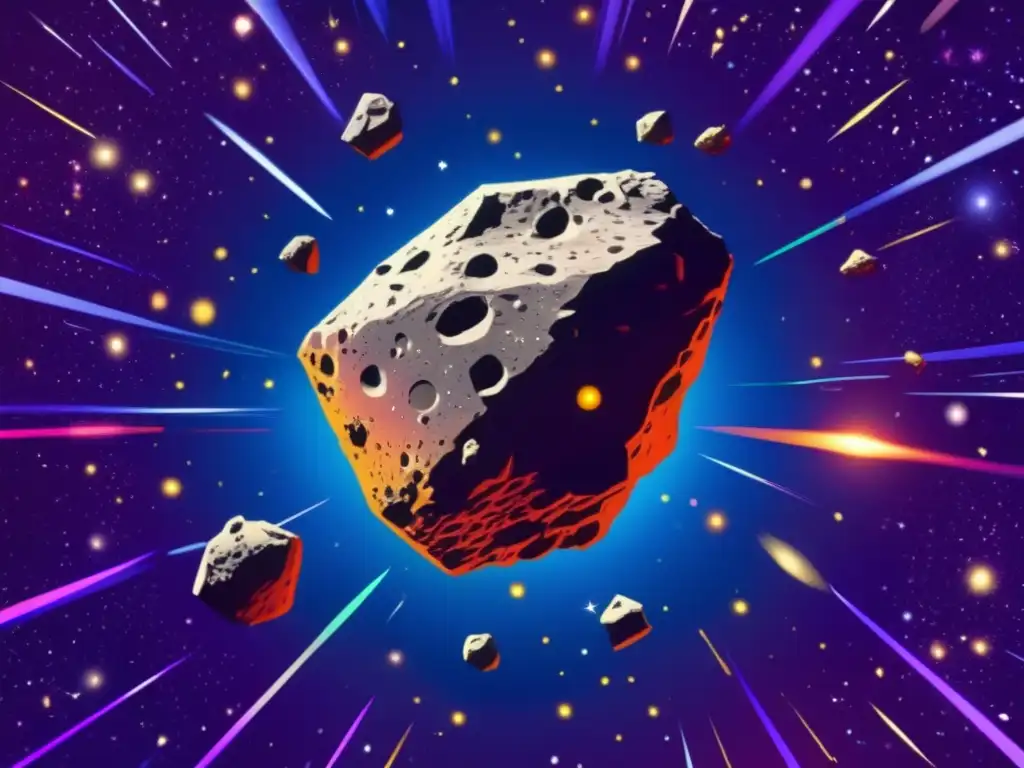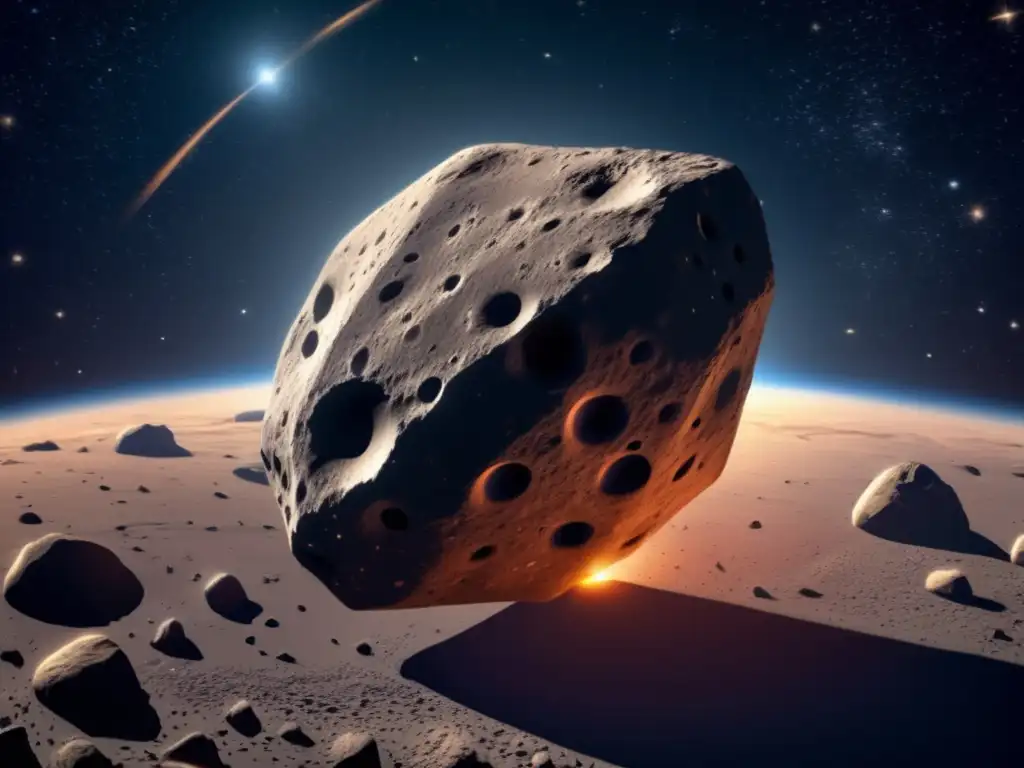Uncovering The Unique Features Of Asteroid Cacus

Introduction
Asteroids have long captivated the imagination of scientists and astronomers alike. These celestial objects hold valuable information about the history of our solar system. One such asteroid, Asteroid Cacus, stands out due to its unique features and characteristics. In this article, we will delve into the intriguing details of Asteroid Cacus and explore its significance.
The Composition of Asteroid Cacus

An Abundance of Iron
Asteroid Cacus is known for its incredibly high iron content. Analysis of its composition reveals that iron makes up more than 70% of its total mass. This high concentration of iron sets Asteroid Cacus apart from many other asteroids in our solar system.
A Mixture of Silicates
In addition to its iron-rich composition, Asteroid Cacus also contains a significant amount of silicate minerals. Silicates are composed of silicon and oxygen and represent some of the most abundant minerals found in the Earth's crust. Their presence on Asteroid Cacus suggests that this celestial body may have undergone geological processes similar to those on Earth.
Trace Elements and Organic Compounds
Scientists have also detected trace elements and organic compounds on Asteroid Cacus. These findings provide valuable insights into the potential for life-supporting materials existing on asteroids. Further research is needed to determine the origin and significance of these compounds.
The Size and Shape of Asteroid Cacus

A Compact and Irregular Shape
Asteroid Cacus has an irregular shape that sets it apart from the more rounded asteroids commonly observed. Its irregularity suggests that it may have been formed as a result of collisions with other objects in space. The impact of these collisions likely caused the asteroid to fracture and create its unique shape.
A Moderate Size
When it comes to size, Asteroid Cacus falls into the category of a medium-sized asteroid. It measures approximately 3 kilometers in diameter, making it larger than some small asteroids but smaller than the giants of the asteroid belt. Its moderate size makes it an object of interest for future exploration missions.
Spin and Rotation
Asteroid Cacus exhibits a relatively slow rotation compared to other asteroids. It completes one full rotation every 15 hours, indicating a stable spin axis. This characteristic provides valuable information about the asteroid's internal structure and potential geological activities.
Orbit and Location of Asteroid Cacus

An Inner Main-Belt Asteroid
Asteroid Cacus resides in the inner region of the main asteroid belt located between Mars and Jupiter. Its orbit is relatively circular with a semi-major axis of approximately 2.8 astronomical units. This places it closer to the Sun than many other asteroids, exposing it to different solar radiation and thermal conditions.
A Non-Resonant Orbital Motion
Unlike some asteroids that exhibit resonant orbital motion, Asteroid Cacus follows a non-resonant path. This means that it does not experience significant gravitational interactions with larger bodies in the asteroid belt, allowing it to maintain a stable orbit over long periods of time.
Interactions with Gas Giants
The presence of gas giants, such as Jupiter, in the vicinity of Asteroid Cacus can influence its orbital characteristics. Periodic gravitational perturbations from these massive planets may cause slight changes in the asteroid's trajectory over time.
Potential Discoveries and Future Missions

Insights into Planetary Formation
The unique composition and characteristics of Asteroid Cacus offer valuable insights into the processes that shaped our solar system. By studying this asteroid, scientists hope to uncover more about the conditions present during planetary formation and the evolution of small celestial bodies.
Resource Exploration
Asteroids like Cacus have attracted attention for their potential as sources of valuable resources. The high iron content of Cacus makes it a potential target for future exploration missions aimed at extracting and utilizing these resources in space-based industries.
Understanding Impact Hazards
Studying asteroids like Cacus provides crucial information for understanding the potential impact hazards they pose to Earth. By comprehending their composition, structure, and orbital characteristics, scientists can better assess the risk they may present to our planet and develop strategies to mitigate potential threats.
Frequently Asked Questions

-
What is the size of Asteroid Cacus?
Asteroid Cacus has a diameter of approximately 3 kilometers.
-
What is the composition of Asteroid Cacus?
Asteroid Cacus is predominantly composed of iron, with significant amounts of silicates, trace elements, and organic compounds.
-
Where is Asteroid Cacus located in the solar system?
Asteroid Cacus resides in the inner region of the main asteroid belt between Mars and Jupiter.
-
How does Asteroid Cacus rotate?
Asteroid Cacus completes one full rotation every 15 hours, exhibiting a relatively slow spin.
-
What insights can we gain from studying Asteroid Cacus?
Studying Asteroid Cacus provides insights into planetary formation, potential resource exploration, and understanding impact hazards.
Conclusion
Asteroid Cacus stands out among its celestial peers due to its unique features and characteristics. Its high iron content, irregular shape, and moderate size make it an object of scientific fascination and potential future exploration. By uncovering the mysteries of Asteroid Cacus, scientists hope to gain a better understanding of our solar system's history and the role asteroids play in it. By sharing your thoughts and engaging with www.asteroidrealm.com, you can contribute to the ongoing exploration and appreciation of these remarkable celestial objects. Thank you for reading and exploring the fascinating world of Asteroid Cacus!
Additional Resources

For further information about asteroids and related topics, please visit the following resources:
- NASA's Asteroid and Comet Watch
- International Astronomical Union (IAU) - Asteroids
- Space.com - Asteroids News
If you want to discover more articles similar to Uncovering The Unique Features Of Asteroid Cacus, you can visit the Asteroid Profiles category.
Leave a Reply




Articulos relacionados: